This article needs additional citations for verification .(July 2021) |


Johan Knutson (28 September 1816, Allerum - 13 September 1899, Helsinki) was a Swedish-born Finnish landscape painter. [1]
This article needs additional citations for verification .(July 2021) |


Johan Knutson (28 September 1816, Allerum - 13 September 1899, Helsinki) was a Swedish-born Finnish landscape painter. [1]
He studied in Copenhagen in 1838, then in the lithography department at the Royal Swedish Academy of Fine Arts from 1839 to 1840. Upon graduating, at the age of twenty-four, he moved to Finland. There, he became a member of the Suomen Taiteilijaseura (Artists' Assoaciation} and taught drawing at a school in Porvoo from 1844 to 1890. [2] There, he became a friend of Johan Ludvig Runeberg, and was influenced by his poetry.
In the early 1840s, he depicted street life in Helsinki in humorous graphic sheets, the continued publication of which was, however, banned by the Police Commissioner.[ citation needed ] From 1845 to 1852, he was involved in illustrating Finland framstäldt i teckningar (Finland Depicted in Drawings), with text by Zachris Topelius. He created a total of 48 landscape images for the book. His drawings were also included in several booklets, known collectively as En resa i Finland (Travelling in Finland); published from 1872 to 1874.
He had his first solo exhibit in 1858. He also participated in exhibitions in Sweden; notably the General Industrial Exposition of Stockholm (1866).
His works may be seen at the Turku Art Museum , Tampere Art Museum , Cygnaeus Gallery, Helsinki City Museum, Porvoo Town Hall and the National Museum of Finland.

Helsinki is the capital, largest and most populous city in Finland. Located on the shore of the Gulf of Finland, it is the seat of the Uusimaa region in southern Finland and has a population of 673,011. The city's urban area has a population of 1,360,075, making it by far the most populous urban area in Finland and the country's most important centre for politics, education, finance, culture and research. Helsinki is located 80 kilometres (50 mi) north of Tallinn, Estonia, 400 km (250 mi) east of Stockholm, Sweden, and 300 km (190 mi) west of Saint Petersburg, Russia. It has close historical links with these three cities.

Porvoo is a city and a municipality in the Uusimaa region of Finland, situated on the southern coast about 35 kilometres (22 mi) east of the city border of Helsinki and about 50 kilometres (30 mi) from the city centre. Porvoo was one of the six medieval towns of Finland, along with Turku, Ulvila, Rauma, Naantali and Vyborg. It is first mentioned as a city in texts from the 14th century. Porvoo is the seat of the Swedish-speaking Diocese of Borgå of the Evangelical Lutheran Church of Finland. Porvoo was briefly the capital of the former Eastern Uusimaa region.

Akseli Gallen-Kallela was a Finnish painter who is best known for his illustrations of the Kalevala, the Finnish national epic. His work is considered a very important aspect of the Finnish national identity. He changed his name from Gallén to Gallen-Kallela in 1907.

Finland attracted over 6.8 million foreign tourists in 2018, with 53 percent coming from other European Union states. In 2017, the value added by tourism was about 4.6 billion euros, or 2.6% of the Finnish GDP, providing approximately 140,200 jobs.
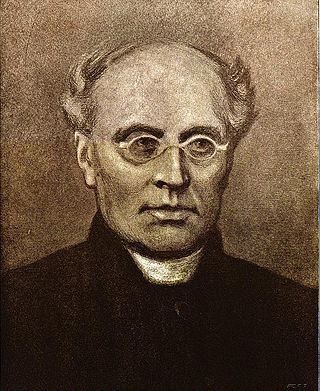
Johan Ludvig Runeberg was a Finnish priest, lyric and epic poet. He wrote exclusively in Swedish. He is considered a national poet of Finland. He is the author of the lyrics to Vårt land which became an unofficial Finnish national anthem. Runeberg was also involved in the modernization of the Finnish Lutheran hymnal and produced many texts for the new edition.
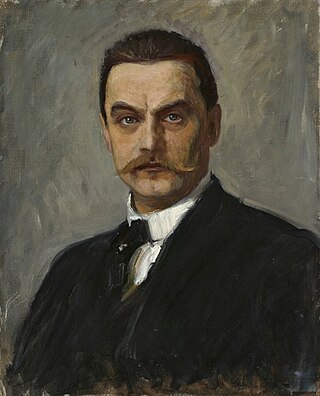
Albert Gustaf Aristides Edelfelt was a Finnish painter noted for his naturalistic style and Realist approach to art. He lived in the Grand Duchy of Finland and made Finnish culture visible abroad, before Finland gained full independence. He was considered the greatest Finnish artist of the second half of 19th - the first half of 20th centuries, and one of the most prominent contributors to the Golden Age of Finnish Art.
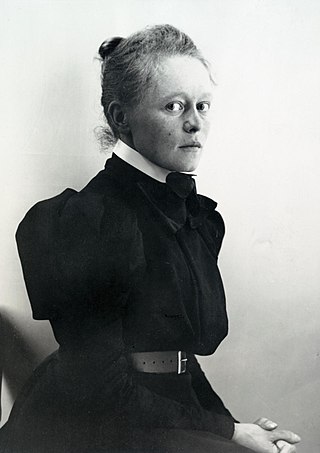
Helena Sofia (Helene) Schjerfbeck was a Finnish painter. A modernist painter, she is known for her realist works and self-portraits, and also for her landscapes and still lifes. Throughout her long life, her work changed dramatically beginning with French-influenced realism and plein air painting. It gradually evolved towards portraits and still life paintings. At the beginning of her career she often produced historical paintings, such as the Wounded Warrior in the Snow (1880), At the Door of Linköping Jail in 1600 (1882) and The Death of Wilhelm von Schwerin (1886). Historical paintings were usually the realm of male painters, as was the experimentation with modern influences and French radical naturalism. As a result, her works produced mostly in the 1880s did not receive a favourable reception until later in her life.
Her work starts with a dazzlingly skilled, somewhat melancholic version of late-19th-century academic realism…it ends with distilled, nearly abstract images in which pure paint and cryptic description are held in perfect balance.

Finnish National Gallery is the largest art museum institution of Finland. It consists of the Ateneum, an art museum; Kiasma, a contemporary art museum; and the Sinebrychoff Art Museum, a historic house and art museum.

Ferdinand von Wright was a Finnish painter - He is best known for his landscapes and animal paintings, especially his detailed depictions of birds, but he also created still-lifes and portraits.
Georg Henrik Tikkanen was a Finland-Swedish author, known primarily for anti-war literature. Several of his works are either autobiographical or semi-autobiographical. Though Finnish, he published primarily in his mother tongue, Swedish. He was born and lived much of his life in Helsinki, and died of leukemia in Espoo. He was married to the Finnish writer Märta Tikkanen.

Emanuel Thelning was a Swedish-born, Finnish painter.
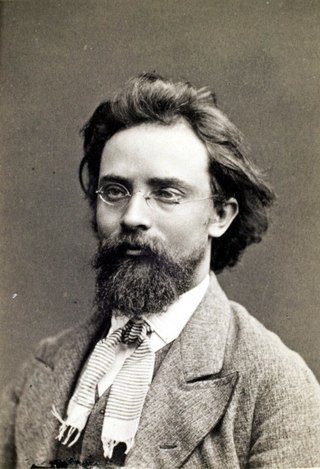
Walter Magnus Runeberg was a Finnish neo-classical sculptor. He was the son of Finnish national epic poet Johan Ludvig Runeberg.
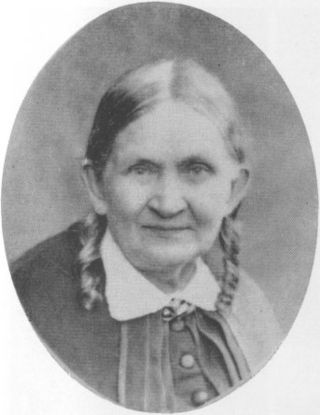
Fredrika Charlotta Runeberg was a Finnish (Finland-Swedish) novelist and journalist. She was a pioneer of Finnish historical fiction and one of the first woman journalists in Finland.
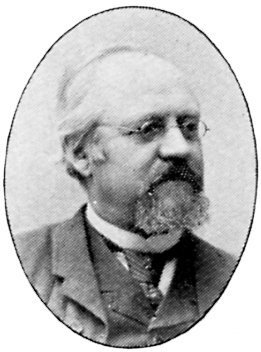
Berndt Adolf Lindholm was a Finnish landscape painter. He is usually associated with the Düsseldorf School, but his work also displays early Impressionist elements. He specialized in coastal scenes.

I. K. Inha was a Finnish photographer, author, translator, and journalist. Inha is considered to be one of the grand masters of Finnish photography. Sometimes he is even referred to as "the national photographer" of Finland. He is especially known for his documentation of Finnish folk tradition, old habits and customs, and landscapes. In addition to his documentary work he was a significant portrayer of modernisation in the early 20th century.

Arthur Gunnar Lönnqvist was a Finnish photographer and businessman.

The Porvoo Town Hall is a former town hall and current museum in Porvoo, Finland. It is located in the old town of Porvoo, in the immediate vicinity of the market square.

Sigrid af Forselles (1860—1935) was a Finnish sculptor, notable for being one of the first professional female sculptors of the country.
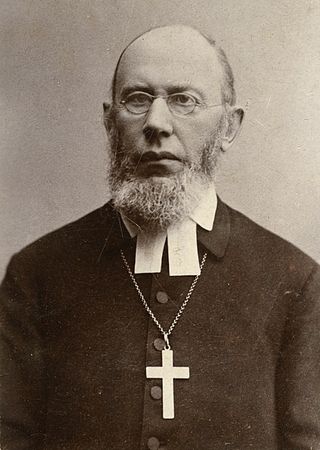
Carl Henrik Alopaeus was a Finnish Lutheran bishop and educator, known as the "apostle to the Deaf" due to his work in deaf education.

Beda Maria Stjernschantz was one of the first Finnish symbolist painters, whose main creative period was during the 1890s' fin de siècle epoch.